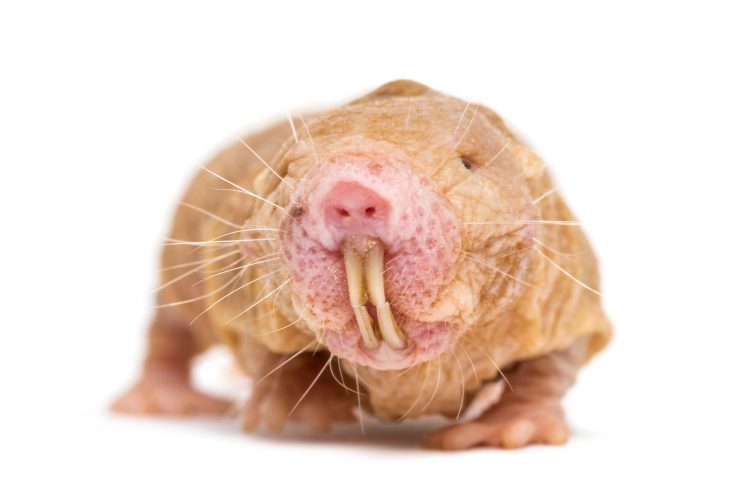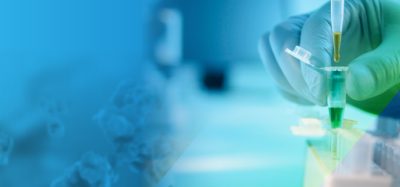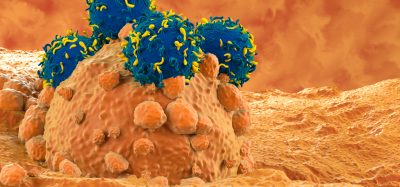DNA repair secrets of naked mole-rats may guide new drug discovery
Posted: 13 October 2025 | Drug Target Review | No comments yet
New research has demonstrated how tiny tweaks in a DNA-sensing enzyme may hold the key to the naked mole-rat’s extraordinary lifespan – offering insights that could one day inform therapies for aging and age-related diseases.


Naked mole-rats (Heterocephalus glaber) are a small, wrinkled type of rodent that remarkably can live up to nearly 40 years – roughly 10 times longer than species of a similar size. Their genetic makeup is surprisingly closer to humans than to mice, making them a valuable model for studying the molecular mechanisms behind longevity.
Naked mole-rats (Heterocephalus glaber) are a small, wrinkled type of rodent that remarkably can live up to nearly 40 years
One crucial factor in long life is genome stability, but the exact ways naked mole-rats maintain DNA integrity aren’t very well understood. Homologous recombination (HR) is a key DNA repair pathway, and defects in HR are linked to premature aging. In humans and mice, the DNA sensor cyclic guanosine monophosphate–adenosine monophosphate synthase (cGAS) can suppress HR repair, potentially promoting cancer and shortening lifespan.
Naked mole-rat cGAS works differently
A new study by Yu Chen and colleagues at Tongji University investigated whether cGAS similarly inhibits HR in long-lived naked mole-rats. Their findings demonstrated that four specific amino acid substitutions in mole-rat cGAS reduce ubiquitination and degradation. This allowed the protein to persist for longer and at higher levels after DNA damage.
Biomarkers aren’t just supporting drug discovery – they’re driving it
FREE market report
From smarter trials to faster insights, this report unpacks the science, strategy and real-world impact behind the next generation of precision therapies.
What you’ll unlock:
- How biomarkers are guiding dose selection and early efficacy decisions in complex trials
- Why multi-omics, liquid biopsy and digital tools are redefining the discovery process
- What makes lab data regulatory-ready and why alignment matters from day one
Explore how biomarkers are shaping early drug development
Access the full report – it’s free!
The increased abundance strengthens interactions with key repair factors, FANCI and RAD50, thereby boosting HR repair. When cGAS was depleted from naked mole-rat cells, DNA damage accumulated.
Experiments confirm lifespan impact
The researchers further demonstrated that fruit flies engineered to express human cGAS containing the four naked mole-rat–specific mutations lived longer than flies expressing unaltered human cGAS.
The findings suggest that these specific evolutionary amino acid mutations in naked mole-rat cGAS not only enhance DNA repair but may also contribute to their longevity.
Implications for drug discovery
The discovery that just four amino acid changes in naked mole-rat cGAS can enhance DNA repair opens new possibilities for therapeutic research. By understanding how cGAS variants stabilise DNA and promote homologous recombination, scientists may be able to design drugs that mimic these effects in humans. These therapies could one day target age-related diseases, improve genome stability and reduce cancer risk by enhancing natural DNA repair pathways.
These therapies could one day target age-related diseases, improve genome stability and reduce cancer risk
While translating this knowledge from naked mole-rats to humans remains a long-term challenge, the study provides a clear proof of concept: small, targeted modifications to proteins involved in DNA repair could be used to develop drugs that slow cellular aging or bolster resilience to DNA damage.
Related topics
Amino Acids, DNA, Drug Discovery, Enzymes, Molecular Biology, Translational Science
Related conditions
Age-related diseases, Cancer
Related organisations
Tongji University
Related people
Yu Chen (Tongji University)








